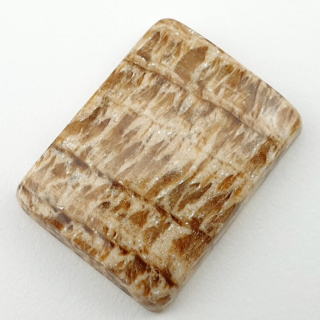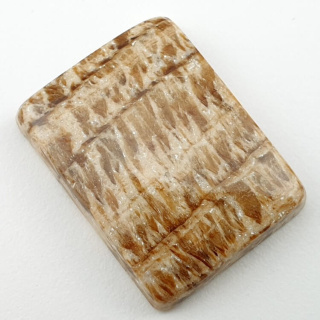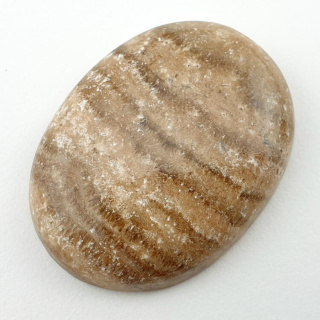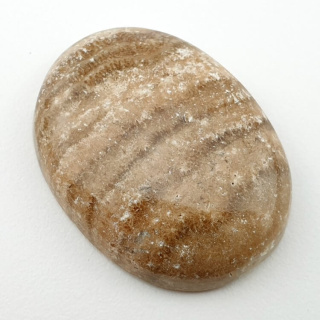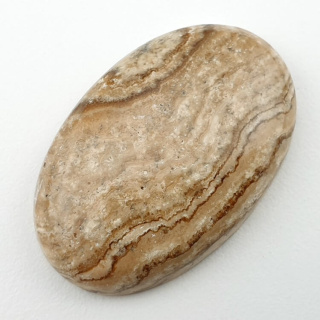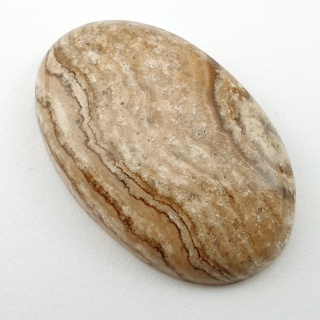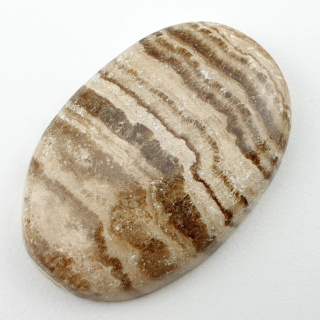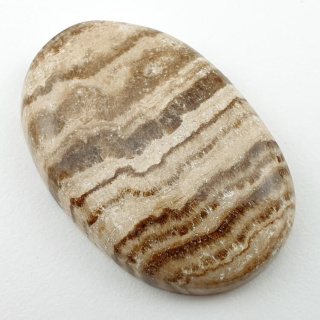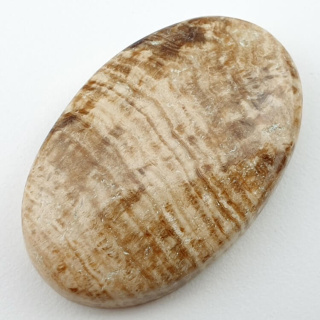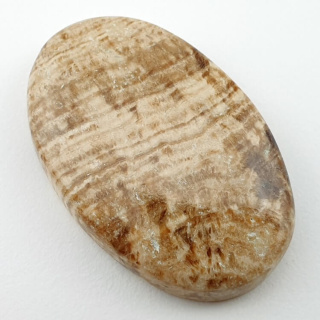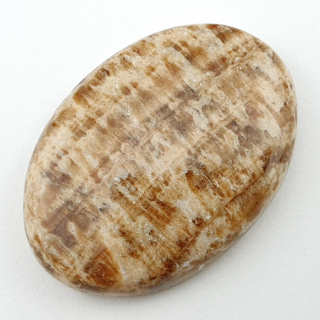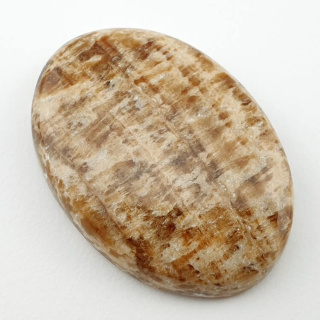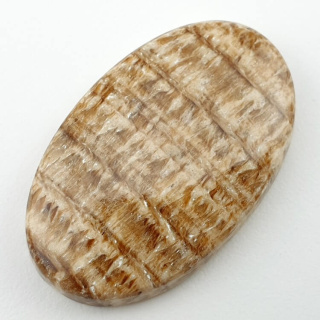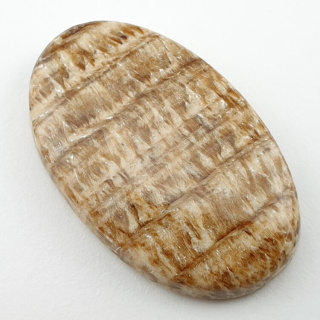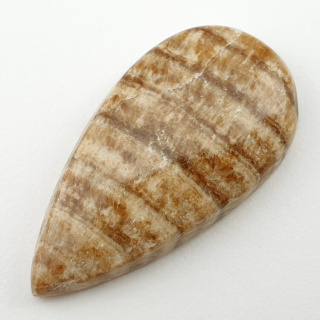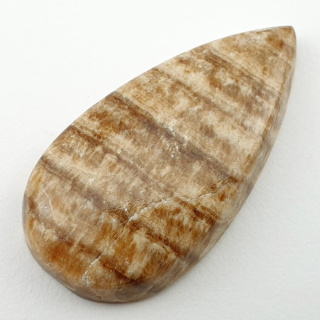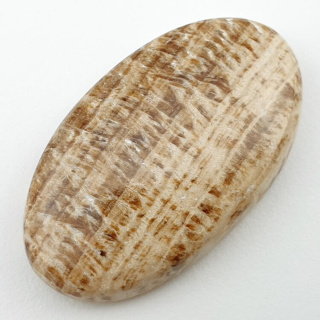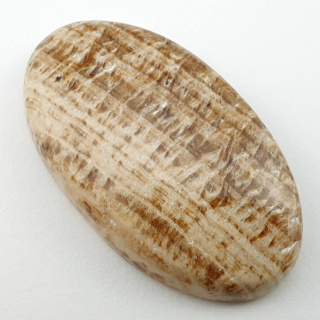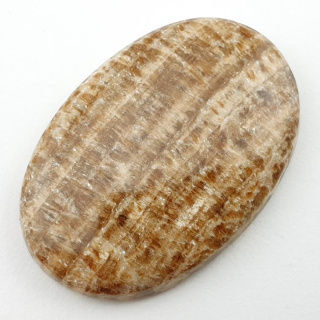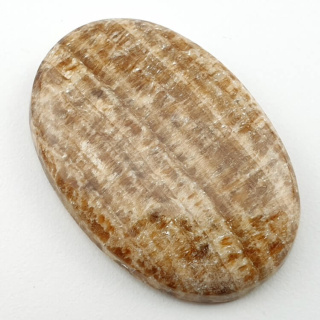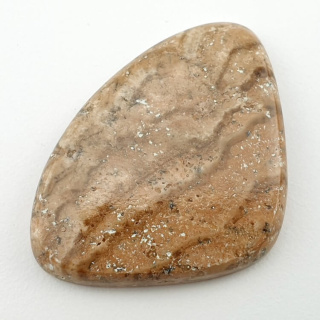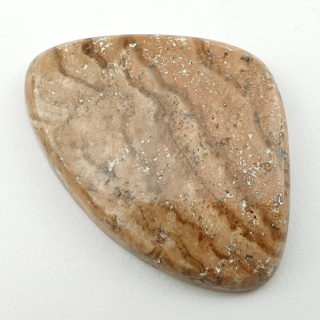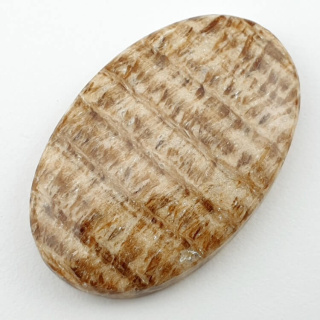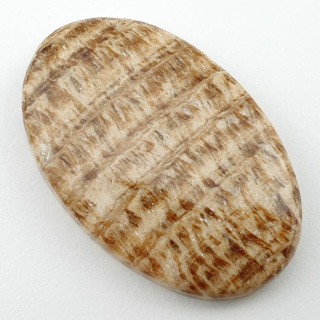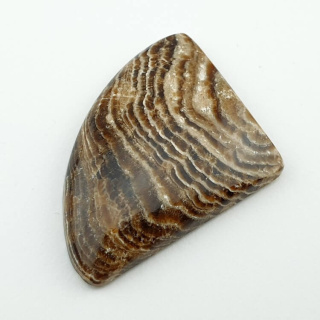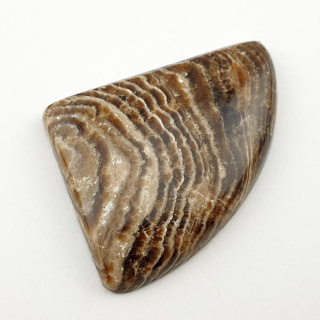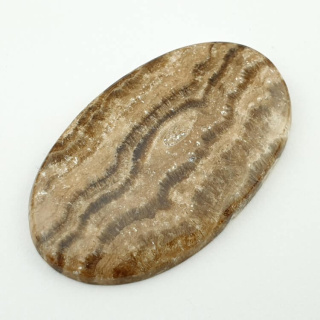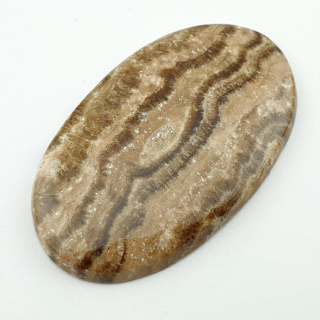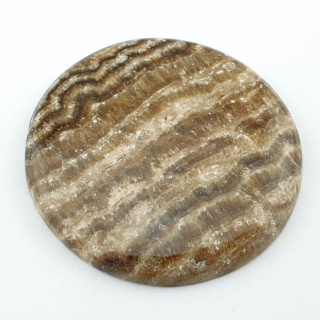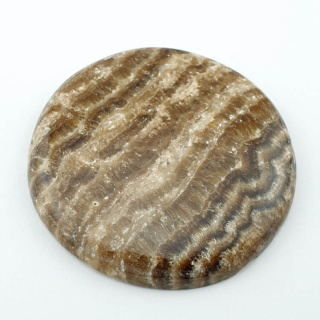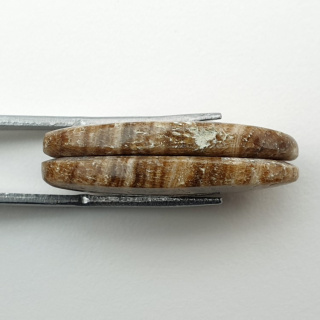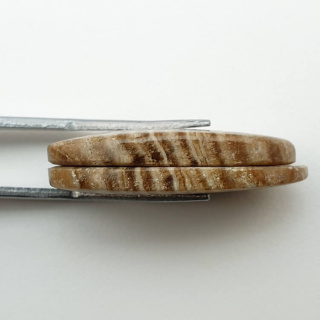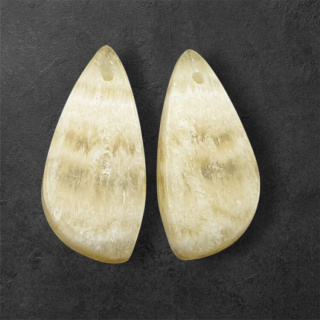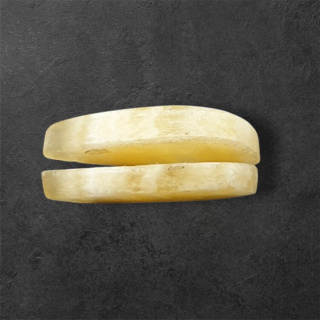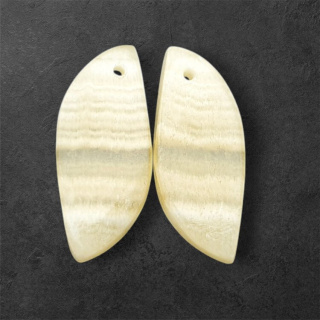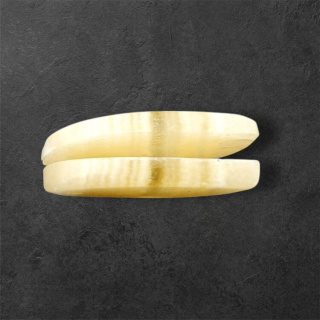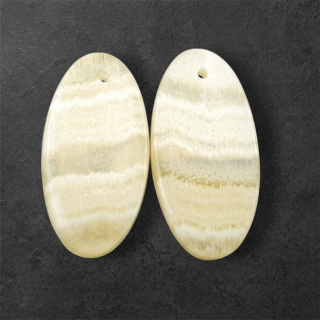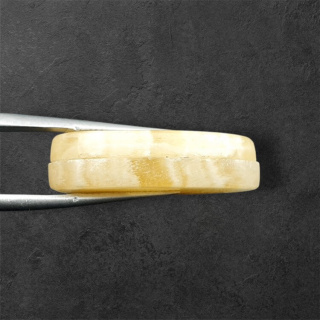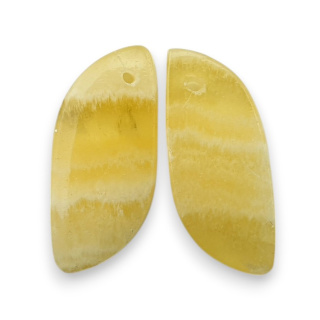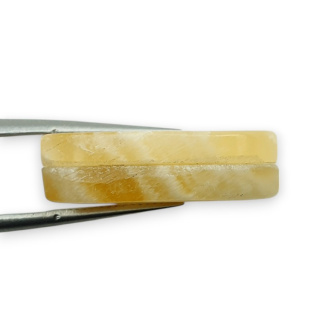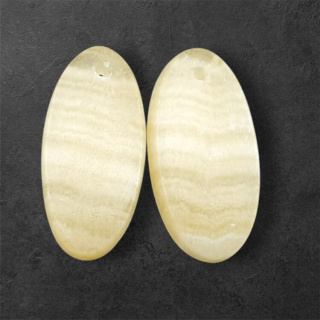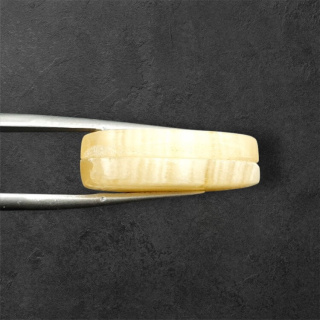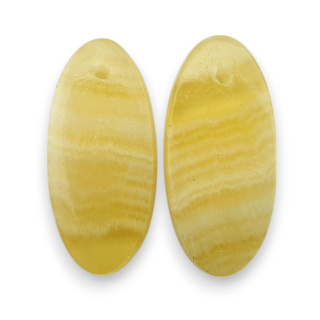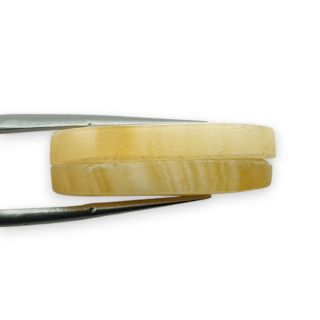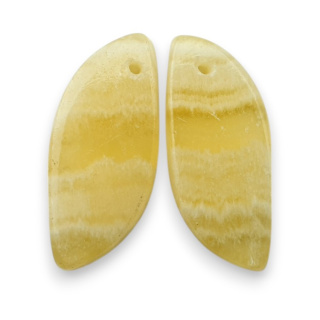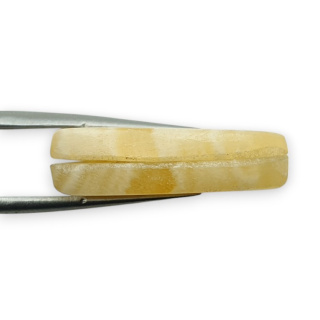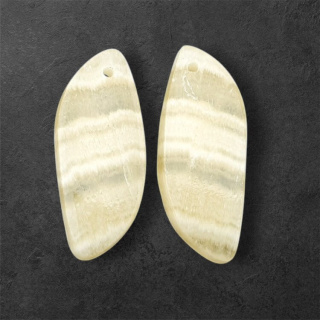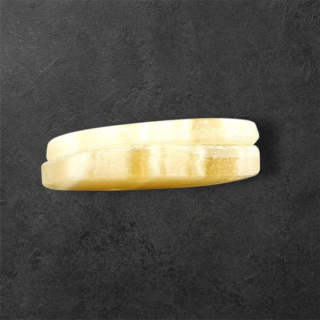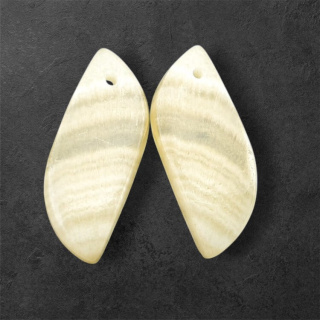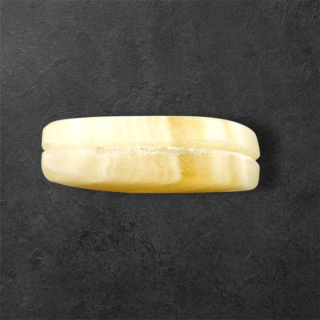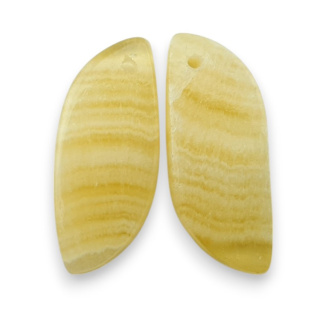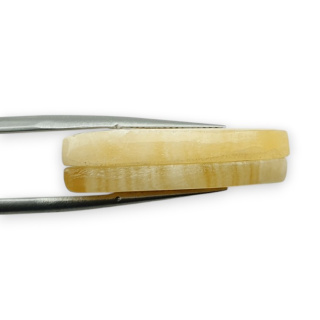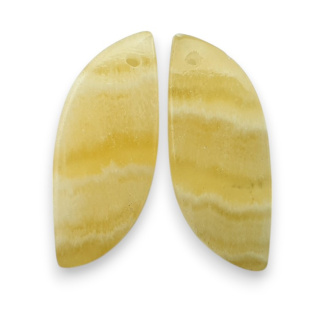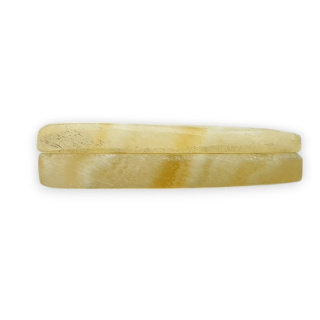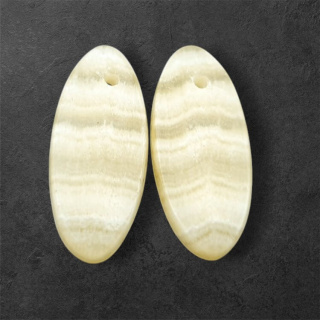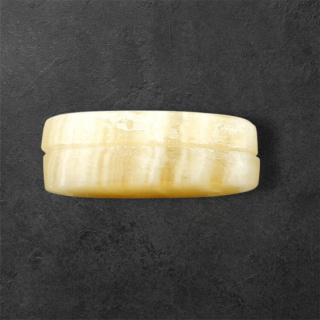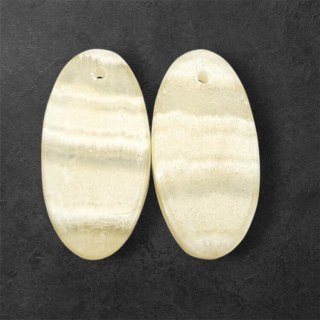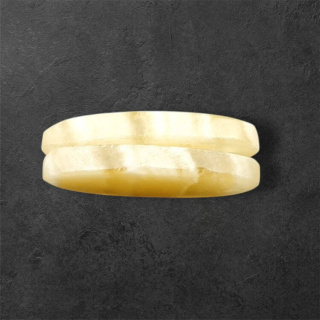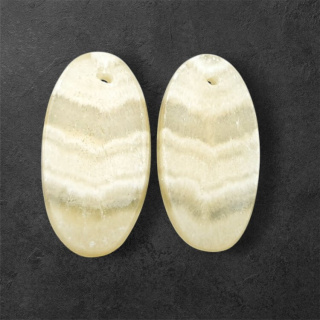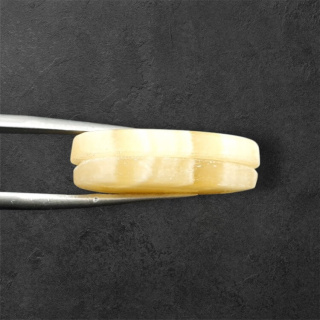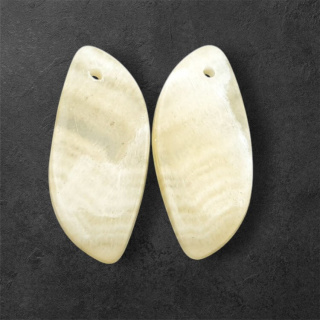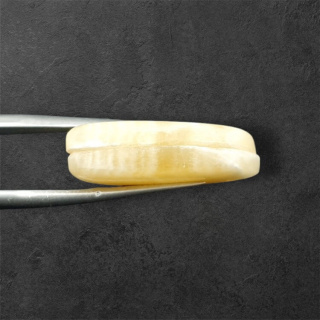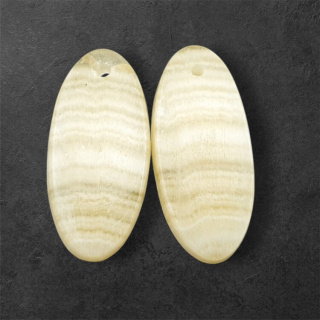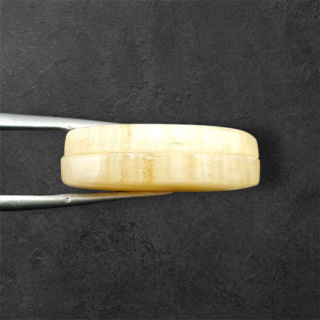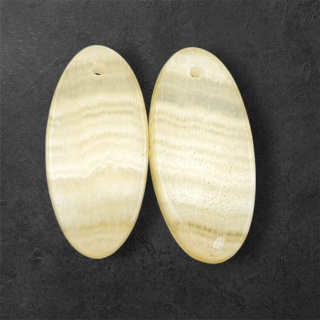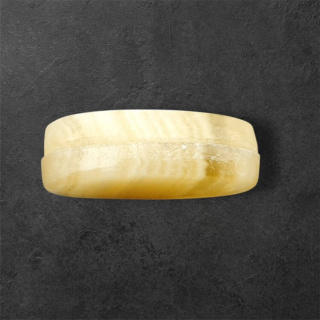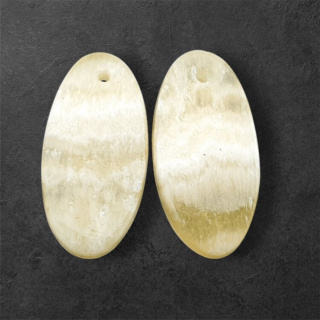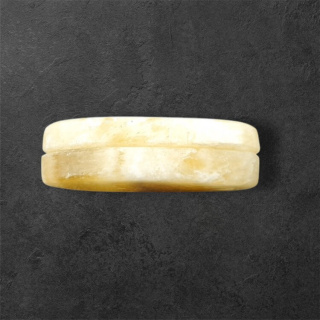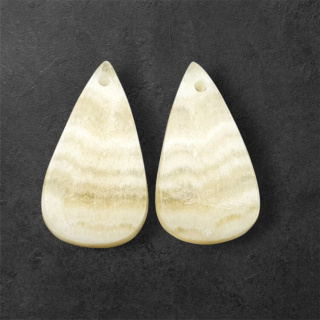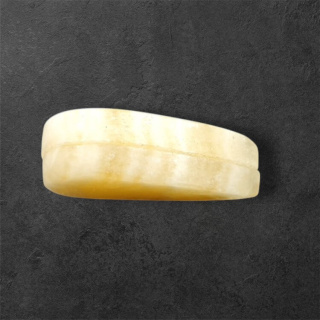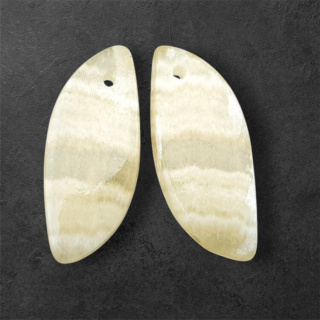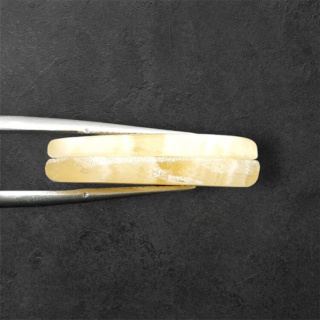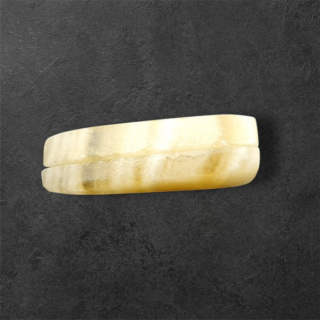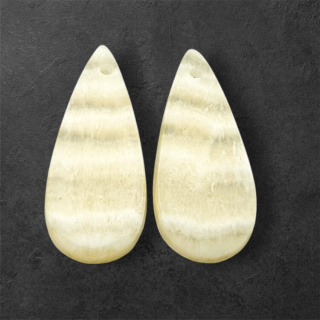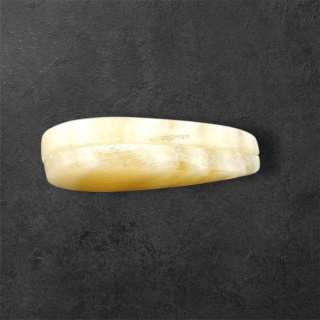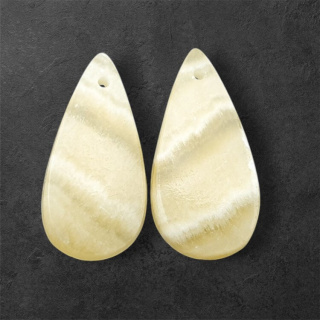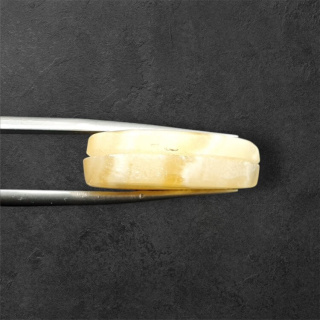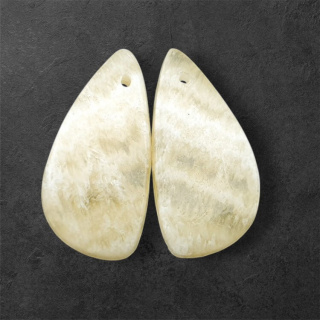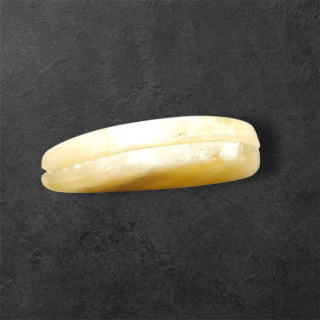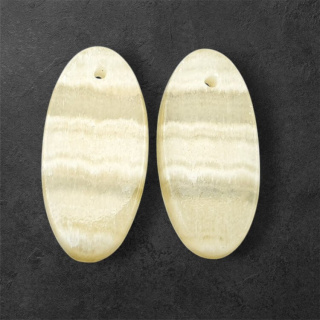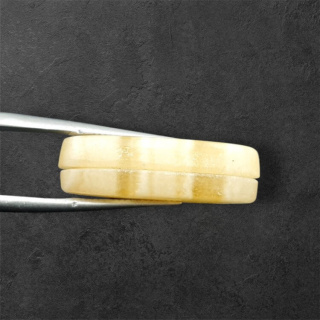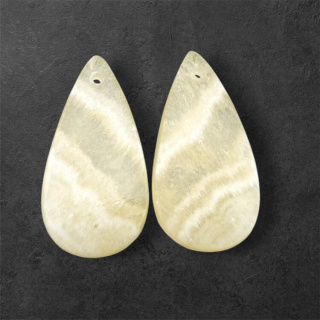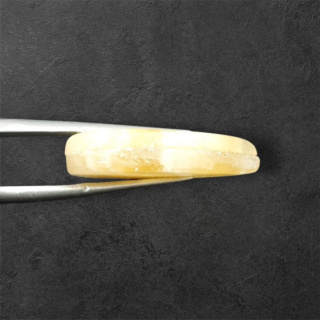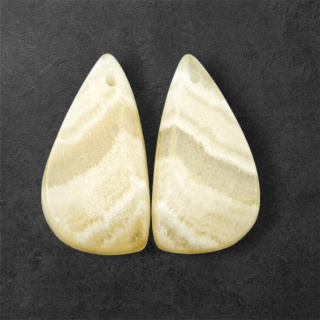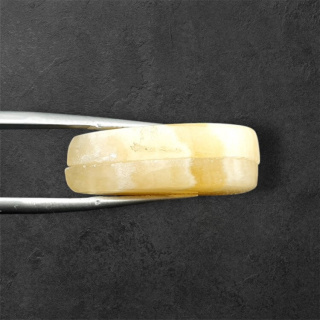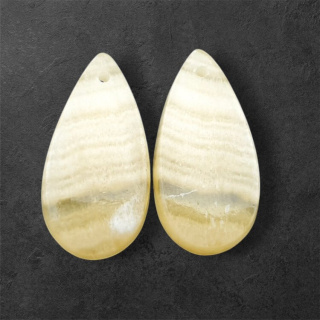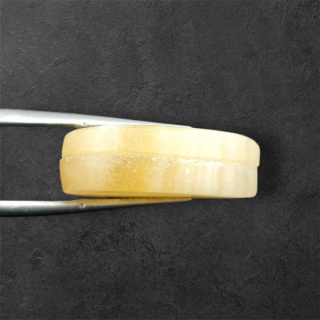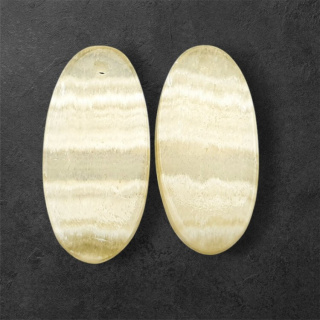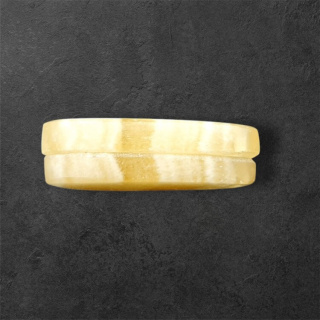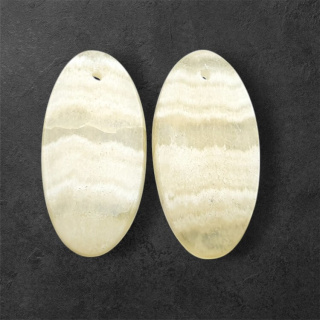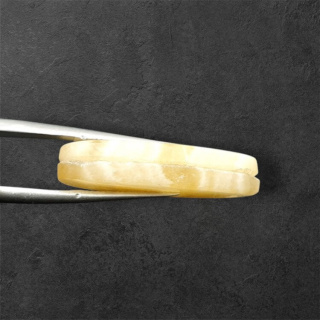Aragonite - beautiful stones and minerals for your products and collections
Number of products : 47Aragonite is a mineral that is a variety of calcium carbonate. Other varieties include calcite and vulcanite. Aragonite has the same chemical formula as calcite but differs in crystal structure. Aragonite is used as a decorative material due to its beautiful crystals. It is also an important mineral in geochemistry and geology as it can influence processes in the Earth's crust and the carbon cycle.
Aragonite is a common mineral and can be found in various geological environments. It is often found in sedimentary rocks such as limestone and marble. It can also occur as a fossil in marine organisms such as corals, shells, and the skeletons of some marine organisms.
What is aragonite? Where does it come from and where is it mined?
Aragonite is a mineral from the carbonate group, and its chemical composition is calcium carbonate (CaCO3). It is one of three polymorphic forms of calcium carbonate, the other two being calcite and vulcanite. This means that all three forms have the same chemical formula but differ in their crystal structure.
The natural occurrence of aragonite can be divided into the following sources:
-
Sedimentary rocks: Aragonite is often found in sedimentary rocks such as limestone, marble, and dolomite. It is formed by sedimentation processes in which calcium carbonate-containing sediments undergo chemical and mineralogical transformations.
-
Fossils: It occurs as a fossil in marine organisms such as corals, shells, skeletons of some marine organisms, and inside organic stones such as ichthyolites.
-
In caves: Aragonite can form beautiful crystal formations in caves as a result of precipitation from limestone solutions.
Aragonite is mined in various parts of the world, depending on its source. It can be found in limestone quarries and other places where the right geological conditions exist. It is also collected as a mineral due to its beautiful crystals and diverse forms.
What are the physical properties of aragonite?
The physical properties of aragonite include its appearance, hardness, fracture, crystal shape, and many other characteristics. These properties influence the various uses of aragonite. Here are some key physical properties of aragonite and their impact on its applications:
-
Appearance: Aragonite typically appears as small, needle-like crystals or rhomboidal shapes. It can occur in a variety of colors, including white, grayish-white, yellowish, red, and blue.
-
Hardness: Aragonite has a Mohs hardness of approximately 3.5-4, which means it is relatively soft compared to other minerals. This property makes aragonite relatively easy to work with and use in jewelry.
-
Fracture: Aragonite has a brittle fracture, which means that it breaks or splits easily. This is an important property that can affect the durability of jewelry or other items made from aragonite.
-
Crystal shape: Aragonite has an orthorhombic crystal structure, which means it has different optical and physical properties compared to other calcium carbonate varieties, such as calcite. This makes aragonite interesting to mineral collectors.
-
Color and transparency: Aragonite can occur in various colors and has varying degrees of transparency, from transparent to milky or opaque. This makes it attractive as a gemstone in jewelry and decorations.
-
Uses: Due to its physical properties, aragonite is used in jewelry to make jewelry, in interior decoration, in marine aquariums as a substrate for corals, and in industry as a building material, for example for the production of lime plaster.
Overall, the physical properties of aragonite make it an attractive material for both mineral collectors and those involved in jewelry design and decoration.
What are the main differences between aragonite and calcite in terms of crystal structure?
The main differences between aragonite and calcite in terms of crystal structure are due to differences in crystal arrangement and molecular structure. Here are the main differences:
-
Crystal structure: Aragonite has an orthorhombic crystal structure. This means that its crystals have three different axis lengths and right angles between them. Calcite has a rhombic crystal structure. In this case, all three crystal axes are the same length.
-
Space groups: Aragonite belongs to the Pmcn space group (group no. 62 in the Hermann-Mauguin system), Calcite belongs to the R-3c space group (group no. 167 in the Hermann-Mauguin system).
-
Isomorphic relationship: Aragonite has a lower degree of isomorphism than calcite, which means that fewer compounds other than calcium carbonate can be incorporated into its crystal structure.
-
Stability: Aragonite is less stable than calcite and can transform into calcite under the right physical and chemical conditions.
-
Optical properties: Due to its crystal variety, aragonite exhibits different optical properties than calcite, such as birefringence, which means that light is split into two rays when passing through the crystal.
Is aragonite used as a collector's and jewelry mineral?
Yes, aragonite is a relatively popular collector's mineral and is sometimes used in jewelry. Here's why:
Aragonite - collector's mineral:
-
Aragonite has beautiful, distinctive crystals of various shapes, making it attractive to mineral collectors.
-
It can occur in a variety of colors, including white, yellow, red, blue, and gray-white, adding variety to mineral collections.
-
Some varieties of aragonite, such as spherulites, form interesting and unique crystal patterns that attract the attention of collectors.
Aragonite in jewelry:
-
Although aragonite is relatively soft compared to some other gemstones and minerals (it has a Mohs hardness of about 3.5-4), it can be used in jewelry to create jewelry.
-
Due to its variety of colors and unique crystal patterns, aragonite can be used to create unique and artistic jewelry designs.
-
Aragonite jewelry is often prized by people who appreciate gemstones with an unusual and individual character.
However, due to the lower hardness of aragonite, jewelry made from this mineral may be more delicate and susceptible to scratching compared to jewelry made from harder gemstones such as diamonds or sapphires. Therefore, aragonite jewelry must be worn with greater care and attention to maintain its appearance and durability.
Use of aragonite in marine aquariums
Aragonite is widely used in marine aquariums as a substrate for marine or reef aquariums.
There are several benefits to using it in this context:
-
Stimulation of coral growth: Aragonite is a natural source of calcium carbonate, which is essential for the growth and health of corals and other organisms in a coral reef. Hard corals, such as acropora and brain corals, use calcium carbonate to build their calcareous skeletons. Adding aragonite to the aquarium provides these organisms with the nutrients they need for growth and development.
-
Maintaining a stable pH: Aragonite acts as a calcium buffer, which helps maintain a stable pH in the aquarium. A stable pH is crucial for the health of marine organisms, as sudden changes in pH can be harmful.
-
Support for filtering organisms: Aragonite has a porous structure that provides a place for beneficial denitrifying bacteria to settle. These bacteria help convert harmful nitrogen compounds such as ammonia and nitrites into less toxic compounds, improving the water quality in the aquarium.
-
Aesthetics and natural appearance: Aragonite has a natural appearance and color, which makes an aquarium with it look more natural and resemble a coral reef.
-
Prevention of pH degradation: Marine aquariums are prone to pH degradation due to biological and chemical processes taking place within them. Aragonite, as a calcium buffer, helps prevent sudden drops in pH, which can be harmful to marine organisms.
However, it is important to monitor calcium and pH levels in the aquarium and adjust the amount of aragonite as needed. Excess calcium can lead to problems with excessive sedimentation, and a deficiency can lead to a drop in pH. Therefore, regular testing and maintenance of proper water parameters is crucial in marine aquariums.
Aragonite as an essential component of marine corals
Aragonite is an essential component of soft and hard corals in marine ecosystems for several key reasons:
-
Skeleton formation: Soft and hard corals, also known as coral reefs, build their skeletons or supporting structures from calcium carbonate (CaCO3), more specifically from aragonite or calcite. Hard corals form a hard skeleton from calcium carbonate, while soft corals, although they do not have hard skeletons, have internal fibers made of aragonite or calcite. These structures provide corals with support and protection. Soft and hard corals need access to calcium carbonate to grow and build their skeletons or structures. Calcium carbonate is a key building block that corals use to form their bodies and structures, such as coral colonies.
-
Protection from predators: The hard skeletons of hard corals provide protection from predators and also provide a habitat for many marine organisms, such as fish and crustaceans. In this way, corals form diverse coral reef ecosystems that are home to many animal species. Coral reef ecosystems, which are based on soft and hard corals, are extremely diverse and important for marine biodiversity. In addition, coral reefs play an important role in protecting the coast from erosion and provide important habitats for fish and other marine organisms.
For hard corals, which build a hard skeleton from calcium carbonate, it is essential to provide calcium in the form of aragonite or calcite. Seawater provides calcium, which is processed by corals into their skeletons. Therefore, the availability of aragonite or calcite in the marine environment is crucial for the health and development of corals and the preservation of coral reef ecosystems.
![[{[item.product.name]}]]([{[item.product.photo.url]}] 75w)

